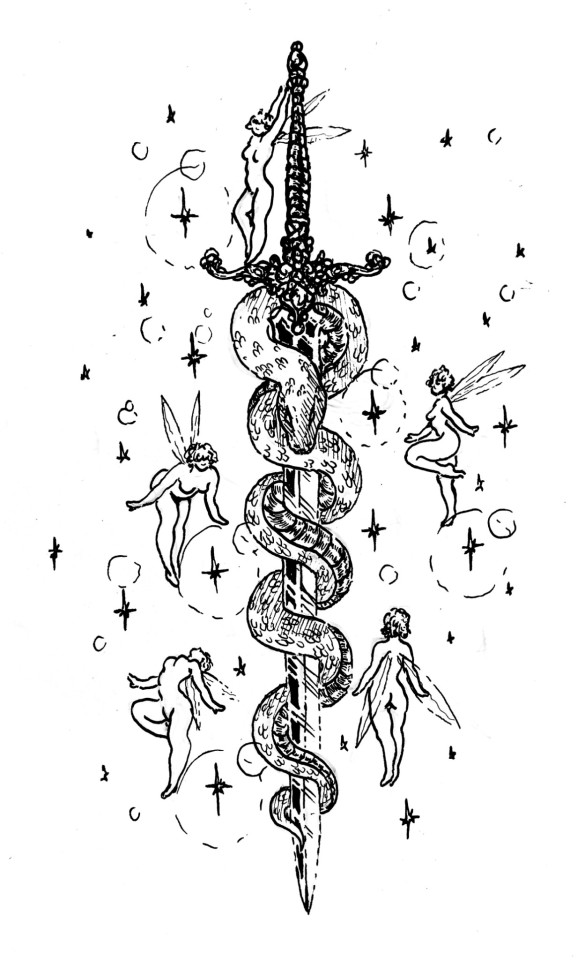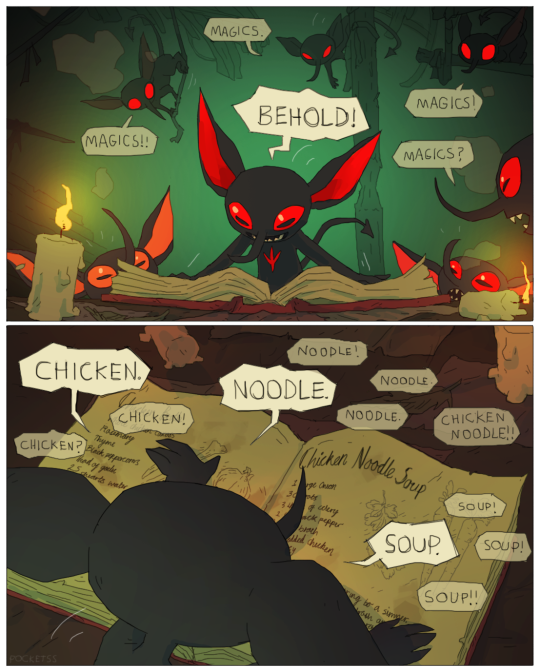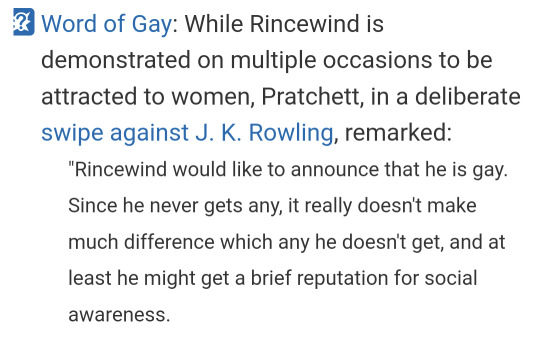Text
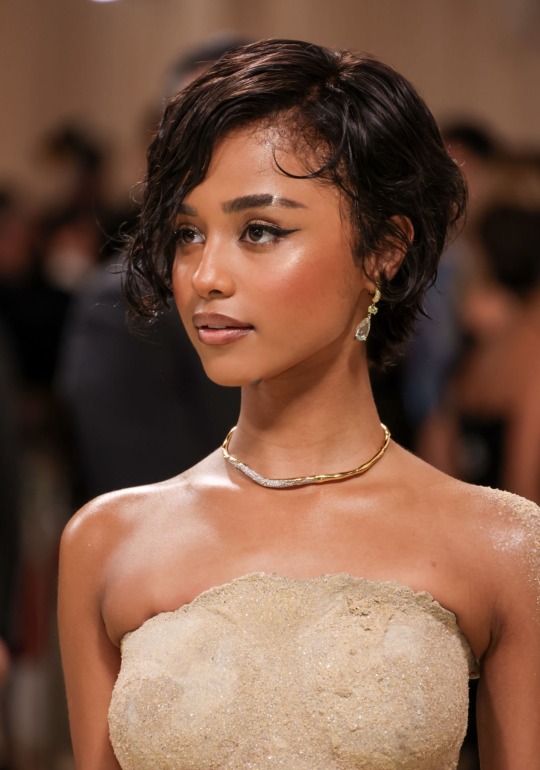


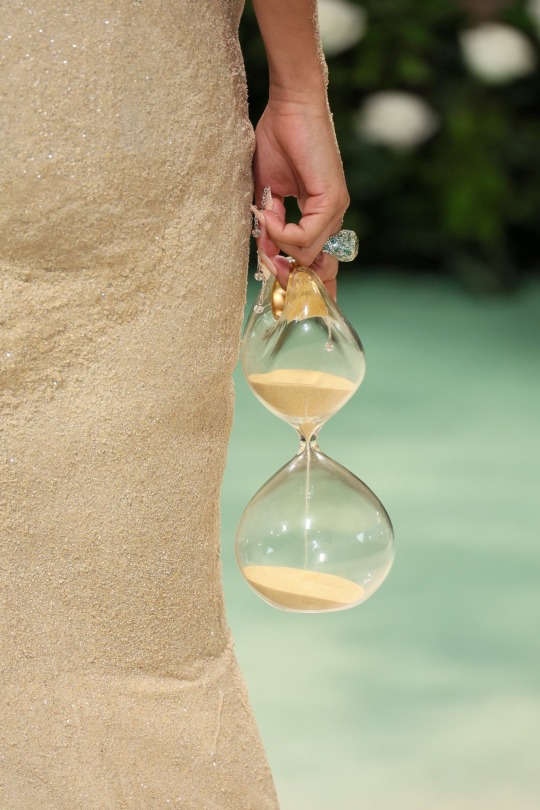
Tyla in a custom Balmain gown for the 2024 Met Gala inspired by “the Sands of Time”.
7K notes
·
View notes
Text
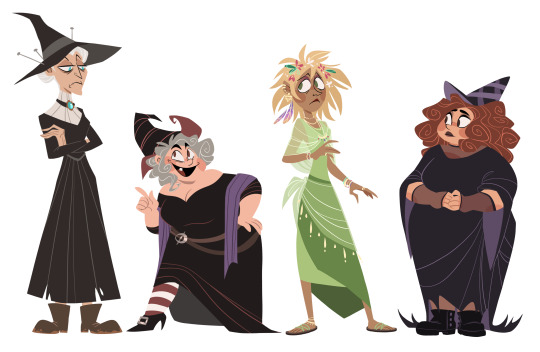
For the Discworld designs series, the witches of Lancre
5K notes
·
View notes
Note
What’s your favourite line from good omens?
The invisible and unbreakable one that joins Crowley and Aziraphale.
15K notes
·
View notes
Text
4K notes
·
View notes
Text
My hot take is that the book is not frequently better than the movie. Literature is not an inherently better, worthier, or affective medium.
Most commonly, books, films, stage plays, radio plays graphic narratives, filk, parodies, and retellings sit in conversation with one another, engaged in a shared process of storytelling, each with their own focus and perspective. Most commonly, adaptations are desired because they invoke new ways of interacting with and new experiences of favoured stories.
The reason I believe the refrain "the book is better than the movie" holds cliche and weight, is because it is most often invoked by fans of popular titles reacting to:
1) adaptations that neglect to the point of desecration the intents, characterization, and heart of the original (of which the original is most commonly the book)
2) adaptations that are too faithful to the original, not allowing space for a medium translation and thereby creating a deficit where one style cannot perfectly recreate another
3) Corporate and capitalistically motivated projects which seem to exist solely to capitalize on buzz, rather than a genuine desire to enter conversation.
Because the fact is, when you remove these outliers, plenty of adaptations are well received despite and because of any departures from source material (Lord of the Rings, Dirk Gently's Holistic Detective Agency, Good Omens, Hunger Games, Pride and Prejudice, Stardust, Howl's Moving Castle, Practical Magic, Cloud Atlas, Fight Club, The Martian, etc.) and plenty of these adaptations in fact eclipse their originals (Jurrassic Park, Jaws, Forrest Gump, The Godfather, The Wizard of Oz, The Devil Wears Prada, The Exorcist, Carol, etc.)
Pitting the book and the movie against one another is unnecessary when we can have both! Because really, I want to inject my favourite stories into my experience by as many modes as possible! I just want my media to be created with care and devotion.
But when we parrot that the book is always better than the film, we stop talking about storytelling and start engaging in a valuation of medium. So let me be clear: the book/print is not an inherently more valuable medium. Original does not inherently mean better. The original book just has the occasional advantage of being the version granted the greatest devotion.
0 notes
Text
First Discworld book I read was a copy of Mort a dear friend lent to me. The second was...yeah, yeah it was Going Postal
that post thats like this is the reading order for discworld is WRONG first you read the first one you find in a second-hand shop or local library. then you read going postal. after that youre on your own
3K notes
·
View notes
Text
For anything else you want to say about the new show Renegade Nell, I'm deeply appreciative for its sartorial gender subversion. I love that we get to see Nell alternate between and at times actively mix codes of feminine and masculine dress AND that the response to this subversion is an equally mixed reaction of acceptance, confusion, and an absolute grab bag of pronouns and descriptors.
Specifically, I enjoy the refusal of limits. Nell's "disguise" as a nobel woman is complete, believable, and well received. Her "disguise" as a doctor is complete, believable, and well received. Her choice to stand before the queen in military dress is accepted at the same time as she retains the feminine social etiquette of curtsying (even as she does so awkwardly). What we are seeing is a complete refusal of easy categorization and that strategy of opacity is so expertly delivered by Louisa Harland and is so very queer.
I'd love to see a deeper investigation into the costuming of this show, its historical referrants, and the queer readings it elicits
632 notes
·
View notes
Text

Flight to the Star Kingdoms -- The party commands a fleet of ships at sea, passing through a magical storm into a void between worlds (Valerie Valusek, D&D module M1: Into the Maelstrom, TSR, 1985)
499 notes
·
View notes
Text
Now the question is, who do I have to beg, bamboozle, or bribe to get a copy of the knitting pattern?
(What Knitter wouldn't want a book full of patterns extensively and lovingly detailed with both historical and nerdy easter eggs??)

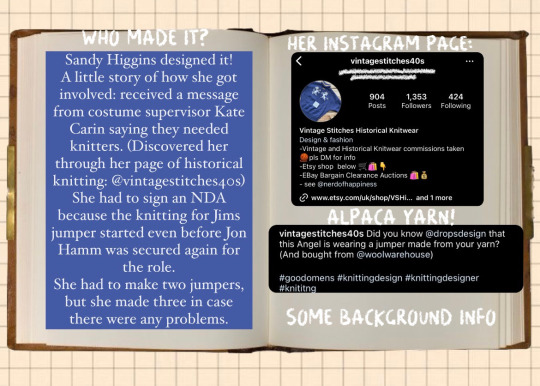
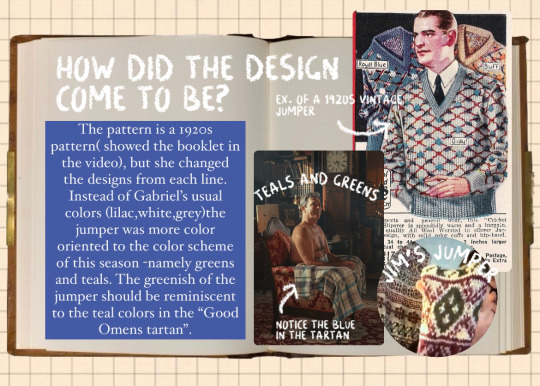
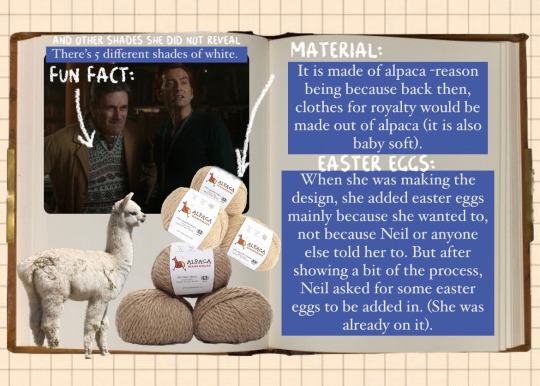

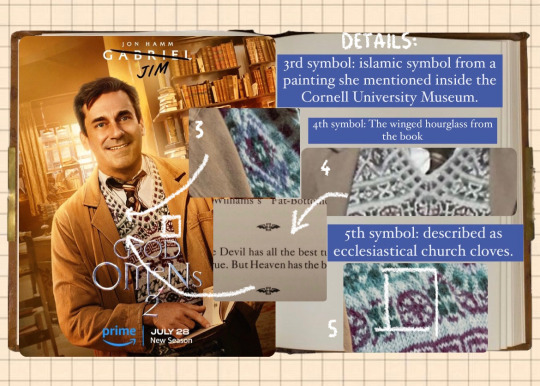

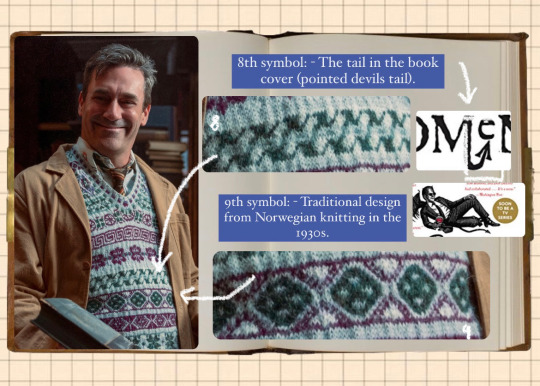


I haven’t seen anyone post about the details of Jim’s jumper (officially said by Sandy who made the jumper). During her panel for the ineffable con 4, she went over the details and patterns and hidden easter eggs (although did not reveal all!). From lilies, to o’s, to greek keys, hourglasses, etc.
13 line (horizontal) patterns are in this jumper. I did this guide to show you what she meant since the video is only available for the people that attended the con.
I have the whole version here. (Only one more slide about the picture of Edward the 8th with the dog).
#knitting#knitblr#knitwear#historical fashion#knitters of tumblr#knitting pattern#textile arts#good omens#jimbriel
320 notes
·
View notes
Text
Oooh! A great Gavin Finney (Good Omens Director of Photography) interview with Helen Parkinson for the British Cinematographer! :)
HEAVEN SENT
Gifted a vast creative landscape from two of fantasy’s foremost authors to play with, Gavin Finney BSC reveals how he crafted the otherworldly visuals for Good Omens 2.
It started with a letter from beyond the grave. Following fantasy maestro Sir Terry Pratchett’s untimely death in 2015, Neil Gaiman decided he wouldn’t adapt their co-authored 1990 novel, Good Omens, without his collaborator. That was, until he was presented with a posthumous missive from Pratchett asking him to do just that.
For Gaiman, it was a request that proved impossible to decline: he brought Good Omens��season one to the screen in 2019, a careful homage to its source material. His writing, complemented by some inspired casting – David Tennant plays the irrepressible demon Crowley, alongside Michael Sheen as angel-slash-bookseller Aziraphale – and award-nominated visuals from Gavin Finney BSC, proved a potent combination for Prime Video viewers.
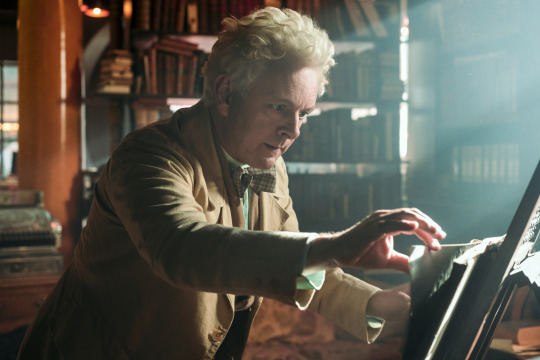
Aziraphale’s bookshop was a set design triumph.
Season two departs from the faithful literary adaptation of its predecessor, instead imagining what comes next for Crowley and Aziraphale. Its storyline is built off a conversation that Pratchett and Gaiman shared during a jetlagged stay in Seattle for the 1989 World Fantasy Convention. Gaiman remembers: “The idea was always that we would tell the story that Terry and I came up with in 1989 in Seattle, but that we would do that in our own time and in our own way. So, once Good Omens (S1) was done, all I knew was that I really, really wanted to tell the rest of the story.”
Telling that story visually may sound daunting, but cinematographer Finney is no stranger to the wonderfully idiosyncratic world of Pratchett and co. As well as lensing Good Omens’ first outing, he’s also shot three other Pratchett stories – TV mini series Hogfather (2006), and TV mini-series The Colour of Magic (2008) and Going Postal (2010).
He relishes how the authors provide a vast creative landscape for him to riff off. “The great thing about Pratchett and Gaiman is that there’s no limit to what you can do creatively – everything is up for grabs,” he muses. “When we did the first Pratchett films and the first Good Omens, you couldn’t start by saying, ‘Okay, what should this look like?’, because nothing looks like Pratchett’s world. So, you’re starting from scratch, with no references, and that starting point can be anything you want it to be.”

Season two saw the introduction of inside-outside sets for key locations including Aziraphale’s bookshop.
From start to finish
The sole DP on the six-episode season, Finney was pleased to team up again with returning director Douglas Mackinnon for the “immensely complicated” shoot, and the pair began eight weeks of prep in summer 2021. A big change was the production shifting the main soho set from Bovington airfield, near London, up to Edinburgh’s Pyramids Studio. Much of the action in Good Omens takes place on the Soho street that’s home to Aziraphale’s bookshop, which was built as an exterior set on the former airfield for season one. Season two, however, saw the introduction of inside-outside sets for key locations including the bookshop, record store and pub, to minimise reliance on green screen.
Finney brought over many elements of his season one lensing, especially Mackinnon’s emphasis on keeping the camera moving, which involved lots of prep and testing. “We had a full-time Scorpio 45’ for the whole shoot (run by key grip Tim Critchell and his team), two Steadicam operators (A camera – Ed Clark and B camera Martin Newstead) all the way through, and in any one day we’d often go from Steadicam, to crane, to dolly and back again,” he says. “The camera is moving all the time, but it’s always driven by the story.”
One key difference for season two, however, was the move to large-format visuals. Finney tested three large-format cameras and the winner was the Alexa LF (assisted by the Mini LF where conditions required), thanks to its look and flexibility.
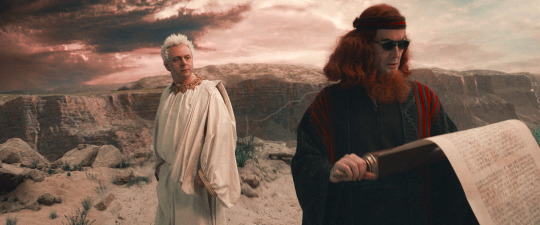
The minisodes were shot on Cooke anamorphics, giving Finney the ideal balance of anamorphic-style glares and characteristics without too much veiling flare.
A more complex decision was finding the right lenses for the job. “You hear about all these whizzy new lenses that are re-barrelled ancient Russian glass, but I needed at least two full sets for the main unit, then another set for the second unit, then maybe another set again for the VFX unit,” Finney explains. “If you only have one set of this exotic glass, it’s no good for the show.”
He tested a vast array of lenses before settling on Zeiss Supremes, supplied by rental house Media Dog. These ticked all the boxes for the project: “They had a really nice look – they’re a modern design but not over sharp, which can look a bit electronic and a bit much, especially with faces. When you’re dealing with a lot of wigs and prosthetics, we didn’t want to go that sharp. The Supremes had a very nice colour palette and nice roll-off. They’re also much smaller than a lot of large-format glass, so that made it easy for Steadicam and remote cranes. They also provided additional metadata, which was very useful for the VFX department (VFX services were provided by Milk VFX).”
The Supremes were paired with a selection of filters to characterise the show’s varied locations and characters. For example, Tiffen Bronze Glimmerglass were paired with bookshop scenes; Black Pro-Mist was used for Hell; and Black Diffusion FX for Crowley’s present-day storyline.

Finney worked closely with the show’s DIT, Donald MacSween, and colourist, Gareth Spensley, to develop the look for the minisode.
Maximising minisodes
Episodes two, three and four of season two each contain a ‘minisode’ – an extended flashback set in Biblical times, 1820s Edinburgh and wartime London respectively. “Douglas wanted the minisodes to have very strong identities and look as different from the present day as possible, so we’d instantly know we were in a minisode and not the present day,” Finney explains.
One way to shape their distinctive look was through using Cooke anamorphic lenses. As Finney notes: “The Cookes had the right balance of controllable, anamorphic-style flares and characteristics without having so much veiling flare that they would be hard to use on green screens. They just struck the right balance of aesthetics, VFX requirements and availability.” The show adopted the anamorphic aspect ratio (2:39.1), an unusual move for a comedy, but one which offered them more interesting framing opportunities.
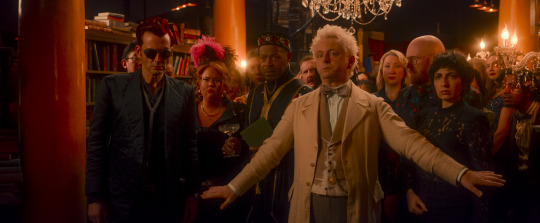
Good Omens 2 was shot on the Alexa LF, paired with Zeiss Supremes for the present-day scenes.
The minisodes were also given various levels of film grain to set them apart from the present-day scenes. Finney first experimented with this with the show’s DIT Donald MacSween using the DaVinci Resolve plugin FilmConvert. Taking that as a starting point, the show’s colourist, Company 3’s Gareth Spensley, then crafted his own film emulation inspired by two-strip Technicolor. “There was a lot of testing in the grade to find the look for these minisodes, with different amounts of grain and different types of either Technicolor three-strip or two-strip,” Finney recalls. “Then we’d add grain and film weave on that, then on top we added film flares. In the Biblical scenes we added more dust and motes in the air.”
Establishing the show’s lighting was a key part of Finney’s testing process, working closely with gaffer Scott Napier and drawing upon PKE Lighting’s inventory. Good Omens’ new Scottish location posed an initial challenge: as the studio was in an old warehouse rather than being purpose-built for filming, its ceilings weren’t as high as one would normally expect. This meant Finney and Napier had to work out a low-profile way of putting in a lot of fixtures.
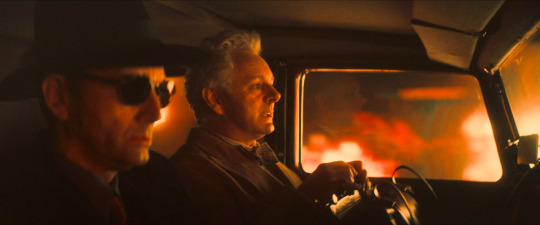
Inside Crowley’s treasured Bentley.
Their first task was to test various textiles, LED wash lights and different weight loadings, to establish what they were working with for the street exteriors. “We worked out that what was needed were 12 SkyPanels per 20’x20’ silk, so each one was a block of 20’x20’, then we scaled that up,” Finney recalls. “I wanted a very seamless sky, so I used full grid cloth which made it very, very smooth. That was important because we’ve got lots of cars constantly driving around the set and the sloped windscreens reflect the ceiling. So we had to have seamless textiles – PKE had to source around 12,000 feet of textiles so that we could put them together, so the reflections in the windscreens of the cars just showed white gridcloth rather than lots of stage lights. We then drove the car around the set to test it from different angles.”
On the floor, they mostly worked with LEDs, providing huge energy and cost savings for the production. Astera’s Titan Tubes came in handy for a fun flashback scene with John Hamm’s character Gabriel. The DP remembers: “[Gabriel] was travelling down a 30-foot feather tunnel. We built a feather tunnel on the stage and wrapped it in a ring of Astera tubes, which were then programmed by dimmer op Jon Towler to animate, pulse and change different colours. Each part of Gabriel’s journey through his consciousness has a different colour to it.”
Among the rigs built was a 20-strong Creamsource Vortex setup for the graveyard scene in the “Body Snatchers” minisode, shot in Stirling. “We took all the yokes off each light then put them on a custom-made aluminium rig so we could have them very close. We put them up on a big telehandler on a hill that gave me a soft mood light, which was very adjustable, windproof and rainproof.”

Shooting on the VP stage for the birth of the universe scenes in episode one.
Sky’s the limit
A lot of weather effects were done in camera – including lightning effects pulsed in that allowed both direct fork lightning and sheet lightning to spread down the streets. In the grade, colourist Spensley was also able to work his creative magic on the show’s skies. “Gareth is a very artistic colourist – he’s a genius at changing skies,” Finney says. “Often in the UK you get these very boring, flat skies, but he’s got a library of dramatic skies that you can drop in. That would usually be done by VFX, but he’s got the ability to do it in Baselight, so a flat sky suddenly becomes a glorious sunset.”
Finney emphasises that the grade is a very involved process for a series like Good Omens, especially with its VFX-heavy nature. “This means VFX sequences often need extra work when it comes back into the timeline,” says the DP. “So, we often add camera movement or camera shake to crank the image up a bit. Having a colourist like Gareth is central to a big show like Good Omens, to bring all the different visual elements together and to make it seamless. It’s quite a long grade process but it’s worth its weight in gold.”


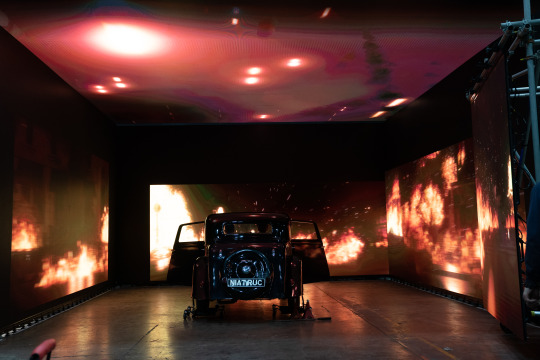
Shooting in the VR cube for the blitz scenes .
Finney took advantage of virtual production (VP) technology for the driving scenes in Crowley’s classic Bentley. The volume was built on their Scottish set: a 4x7m cube with a roof that could go up and down on motorised winches as needed. “We pulled the cars in and out on skates – they went up on little jacks, which you could then rotate and move the car around within the volume,” he explains. “We had two floating screens that we could move around to fill in and use as additional source lighting. Then we had generated plates – either CGI or real location plates –projected 360º around the car. Sometimes we used the volume in-camera but if we needed to do more work downstream; we’d use a green screen frustum.” Universal Pixels collaborated with Finney to supply in-camera VFX expertise, crew and technical equipment for the in-vehicle driving sequences and rear projection for the crucial car shots.

John Hamm was suspended in the middle of this lighting rig and superimposed into the feather tunnel.
Interestingly, while shooting at a VP stage in Leith, the team also used the volume as a huge, animated light source in its own right – a new technique for Finney. “We had the camera pointing away from [the volume] so the screen provided this massive, IMAX-sized light effect for the actors. We had a simple animation of the expanding universe projected onto the screen so the actors could actually see it, and it gave me the animated light back on the actors.”
Bringing such esteemed authors’ imaginations to the screen is no small task, but Finney was proud to helped bring Crowley and Aziraphale’s adventures to life once again. He adds: “What’s nice about Good Omens, especially when there’s so much bad news in the world, is that it’s a good news show. It’s a very funny show. It’s also about good and evil, love and doing the right thing, people getting together irrespective of backgrounds. It’s a hopeful message, and I think that that’s what we all need.”
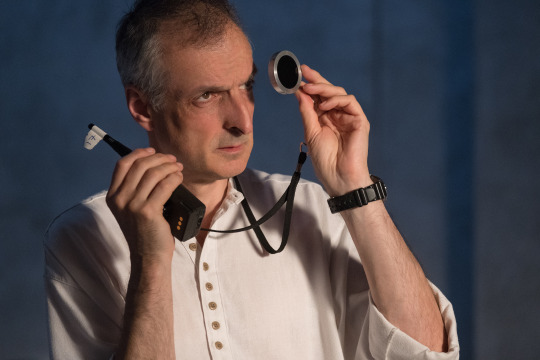
Finney is no stranger to the idiosyncratic world of Sir Terry Pratchett and Neil Gaiman.
2K notes
·
View notes
Text
Need y’all to know that in the 1970’s a letter to the editor was published in Daily Telegraph where the author offhandedly used the phrase “Tolkien-like gloom” to describe an area with barren trees and JRRT himself wrote back an incensed rebuttal at the use of his name in a context that suggested anything negative about trees.
38K notes
·
View notes
Photo

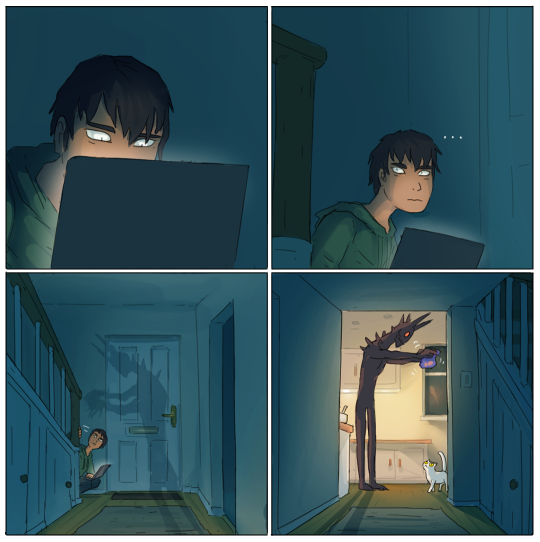


so hard to find a decent exorcist these days :/
189K notes
·
View notes
Text
I present, with limited introduction, the Spectrum of Catharsis, or how different mediums encourage different engagements
Dreams: I've never had a nightmare; I've only ever had lucid dreams. It's a play, a video game, where I am at once a singular player character, all of the NPCs, and the director. There is no conscious connection to the physical world or body, only the Fantasia of the mind, which might at any point alter the plot, dilate time, or shift to a new story to preserve engagement. Whatever happens, however disturbingly gentle or gently disturbed, I author and perpetuate and recieve all of it wholly in the space of the mind
Masturbation: In erotic fantasy, I am again every participant and at the same time a specified participant and simultaneously no participant at all. Every act, however sweet or depraved or transgressive remains fantasy - the imagined participants can sigh and contort and nuzzle and strain, while the only bodily sensation that reaches me is the motion and touch of the hands (Eve Sedgwick has a fascinating writing - Dialogue on Love - where she discusses being unable to masturbate after her masectomy because suddenly her fantasies needed to ratify whether the participants had one breast or two, either foreclosing or forcing identification, but I digress) (Is this type of complete identification something only possible in queer imaginings then? Where gender and body and identity are fluid abstracts? Where autoerotic doubling becomes an exercise in wordplay? I digress again)
Writing: In writing, I again direct the scene, at once speaking for and embodying every character and no character, safely behind the tactility of my hands, all the heights and discomfitures of plot reaching no further into the real than my fingers. I am aware, in this mode, of the possible existence of a future reader, of the need to justify my choices to my future publishers, to possibly receive future response, but in the act of writing there is only me, my fantasia and mimesis, and my hands.
Reading: Enter a new collaborator - the author, or dependent on the medium, the Illustrator or the narratorator. I am, through the book, engaged with another. Yet, at the moment of reading, all those affects the other shares reach me through that same self-possessed imagination and I am again a role player, fluidly identifying and disidentifying with all the players in the scene, experiencing their traumas and joys at the level of the ephemeral but at no level realer than hands upon the page, the moving of lips, the shuddering of breath or the loosing of tears.
TTRPG: I am doubled, self behind character, speaking words that pass not through my sensibilities but the demands of narrative and performance, receiving sentiments that pass through the buffer of character before reaching me. My hands role the dice, my facial expressions leap and twist in performative affect, but all is again gestural and labial - I describe the thrust of the sword without the cool of the hilt in my hand. I receive the blow without the snap of my jaw.
Acting: Again, the doubling, the self behind character. Foreclosure heightens as the words cease to be my own. Identification heightens as my whole body contorts to the performance, every muscle and affect engaged, stretching out and finally reaching others, body and prop. In acting, there is something to touch, a whole body to seat the character in, yet all is still character, still a show, still a false face to hide behind
Watching: Play, television, film - my mask, my buffers, are stripped. The characters are all visibly other people having experiences and emotions beyond the range of my influence. I am myself, and only myself, watching a scene unfold that I cannot impact. I have to turn my head when I am presented with more than I can take.
Jest: The Haunted House, the spectacle, the game, the practical joke. There is a layer of disreality, of certainty that however the scene appears, nothing here truly wishes to reach me or hurt me. And yet, it is still me, moving through these halls, having these bodily reactions
The Real: This is the hardest experience to swallow - all of me, situated fully in my body, in a scene with other people who are truly other people with their own structures and intentions, whose gestures and vocalizations can reach me and sooth me and cut me with the full weight of their measure. Looking away is not enough. It is feel or run.
#how do i tag this#on reading#on writing#on acting#reading#writing#acting#lucid dreaming#roleplay#catharsis#discourse#on triggering content and engaging with trauma I guess
0 notes

